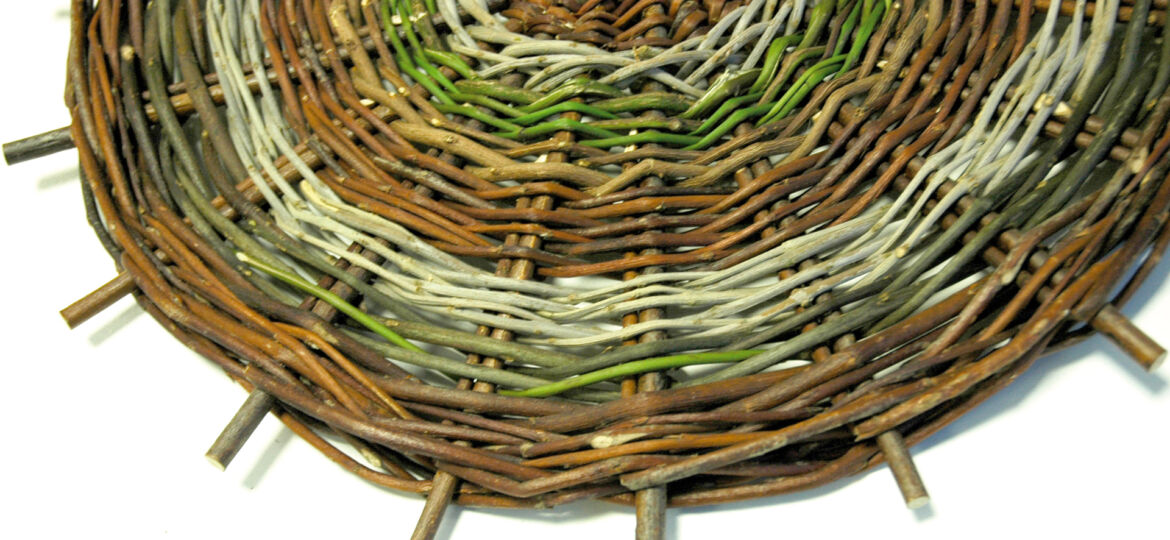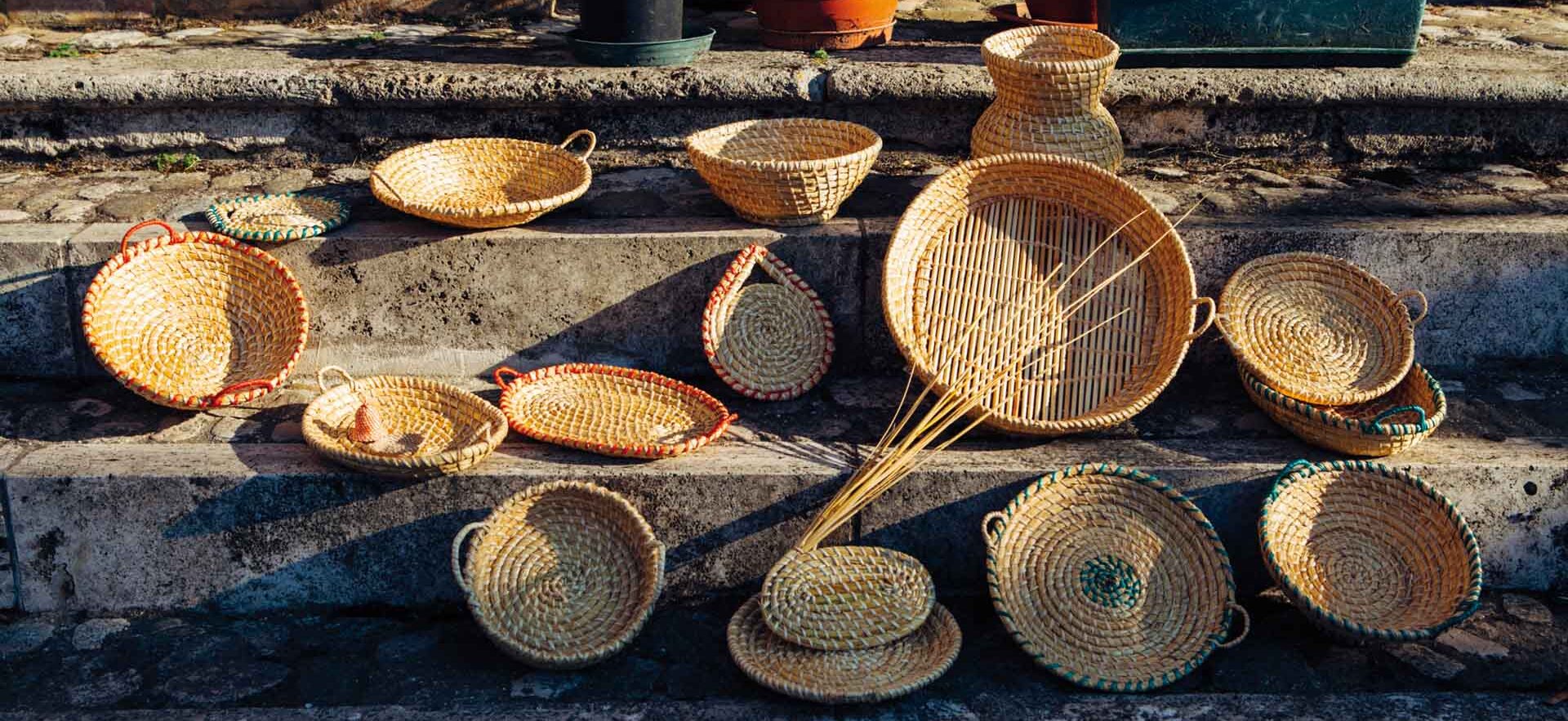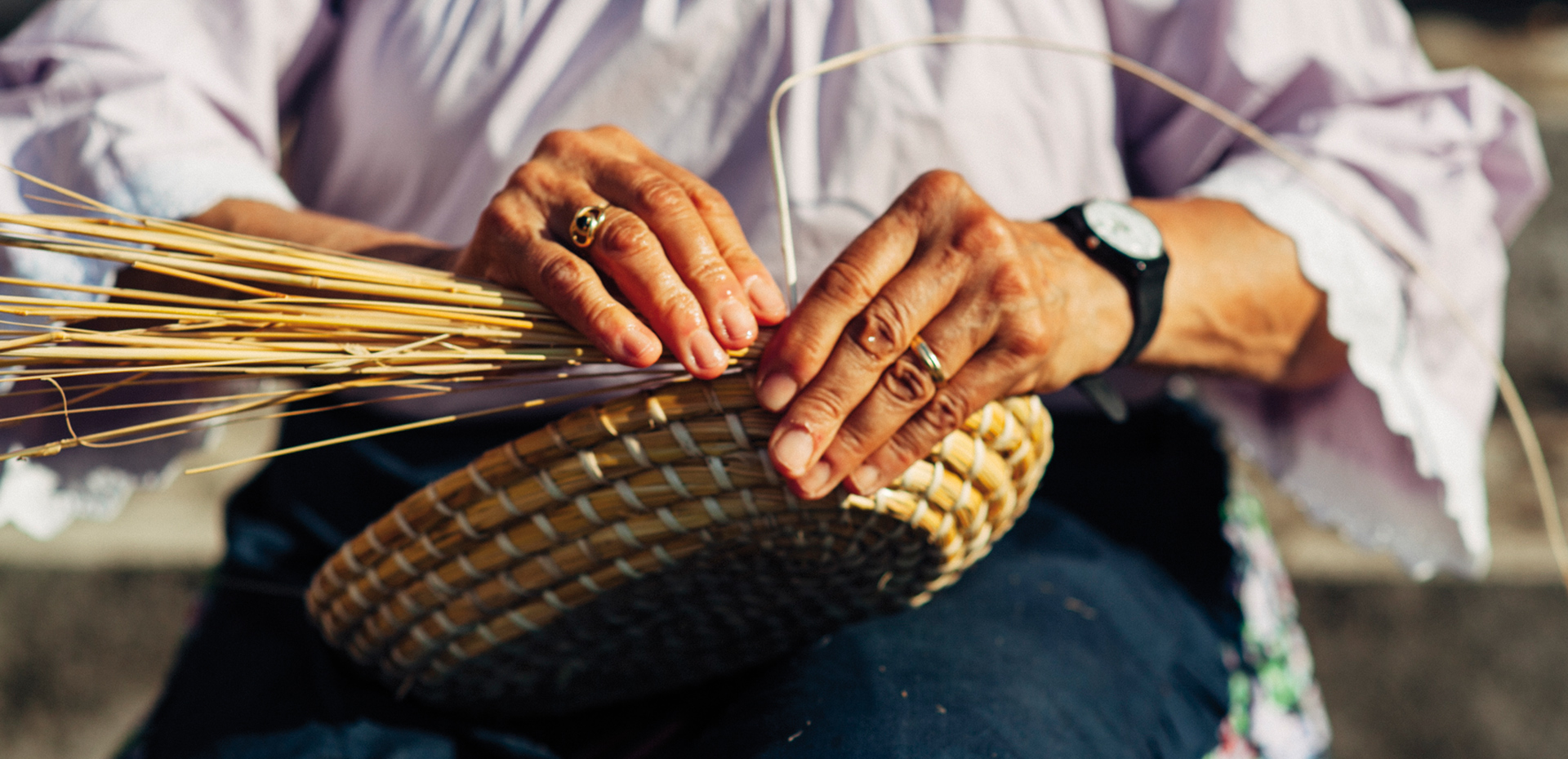
Twigs of olive, broom and elm trees, but especially wicker and reeds, are the most commonly used weaving materials for making baskets typical of rural tradition.
Very old is the practice of weaving willow or wicker, as well as other agrestic and marshy materials, easily flexible to be worked by hand and available in the countryside and along river banks.
Both natural wicker, with its typical dark-brown husk, intended for a more rustic and household product, and cleaned of the husk, white in color, chosen for more elegant and refined baskets, are used for the weaving activity.
Some artifacts, typical of rural culture, are very characteristic.
These range from large wicker and reed baskets for storing grains, to baskets for transporting food to markets or taking it to farmers in the fields. The latter are very capacious and feature two or four arched handles, blocked by a willow branch that serves as a support.
On the other hand, a very ingenious basket is for picking fruit, such as cherries, blackberries or other medium and small fruits. Its special feature is the hook built into the handle, a branch of dogwood, which allows it to be hung directly from the plant in order to make harvesting more convenient.
Also very common is the gavagnola, a container for harvesting olives. It is carried like a pouch, attached to the waist with a string, to facilitate olive harvesting.
Another traditional product, made of rough or white willow and flared in shape, is the mushroom picking basket.
Also typical is the reed basket for cheese forming, with its characteristic grooves. And then the table cheese holders, used to rest, cut and serve cheese.
The classic bread basket, made with the traditional “slicing” technique, strips of willow with a pattern that goes up and down along the riser of the basket, a different technique from the classic one and one that sets it apart.
Finally, the very useful protectors for bottles, flasks, carboys and other glass containers, Made from wicker. These woven artifacts also serve to keep the contents cool, thanks to the vapor transmitted by the wicker covering.



